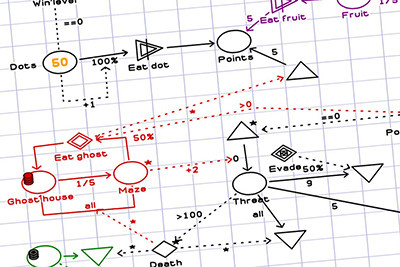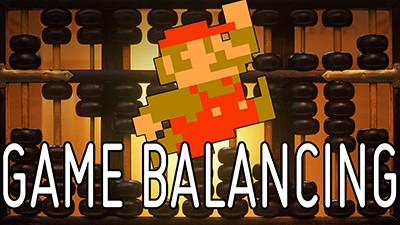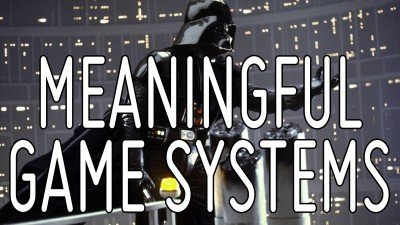Breakdown of the Design Disciplines
 My article Lifting the Designer’s Curse proposed a breakdown listing skills of the field of game design, but voluntarily left out other design disciplines like level design and narrative design. Here is a short post that aims at detailing the different disciplines, the related skills and pointing to reference articles whenever possible.
My article Lifting the Designer’s Curse proposed a breakdown listing skills of the field of game design, but voluntarily left out other design disciplines like level design and narrative design. Here is a short post that aims at detailing the different disciplines, the related skills and pointing to reference articles whenever possible.
Please note that they are mainly setup with AAA game development in mind, and could probably be adapted for different needs.
Also read: Lifting the Designer’s Curse – The game designer’s job is largely misunderstood.
Game Design
 System design: Game rules, game systems, game theory, AI state machines, balancing, stuff that’s linked to logic/math. See Ernest Adam’s Preventing the Downward Spiral.
System design: Game rules, game systems, game theory, AI state machines, balancing, stuff that’s linked to logic/math. See Ernest Adam’s Preventing the Downward Spiral.
- Interaction design: Controlling how the game gives information to the player so he can make his decision, and how the player can input his decision back into the game. Ergonomics, cognitive science, and user interface are natural domains to take reference from. Check out Charles L Mauro’s Why Angry Birds is so successful and popular: a cognitive teardown of the user experience.
- Motivation design: Maximizing player engagement, reward systems, ensuring the player learns, balancing reward and frustration … Psychology and neuroscience are you friends here. Read John Hopson’s Behavioral game design.
Level Design
 Space creation: Creating game space, understanding the emergent player flow, directing player attention in a fluid fashion. Architecture, landscape design and urbanism are some academic fields of reference. More in Christopher Totten’s Designing Better Levels Through Human Survival Instincts.
Space creation: Creating game space, understanding the emergent player flow, directing player attention in a fluid fashion. Architecture, landscape design and urbanism are some academic fields of reference. More in Christopher Totten’s Designing Better Levels Through Human Survival Instincts.
- Gameplay implementation: Creation of encounters, understanding and balancing the nature of the challenge and the involved player skills. See the excellent Mike Stout’s Boss Battle Design and Structure.
- Theatrics: Creating moods in levels, environmental narrative, implementing narrative elements in the gameplay flow. Theater and cinematography are generally great fields to study here. You’ll find more info in GDC 2010: “What Happened Here?” – Environmental Storytelling.
Narrative Design
- Screenplay writing: Writing good lines and good stories. It is pretty much a discipline on its own that is very widely studied, with tons of literature on the subject.
- Narrative Interface: Designing the tools that will allow the story to be told, walk and talks, audiotapes, interruptible cinematics…
- Player-Centric plotting: Creating a story that the player can play and be part of, instead of just hearing/reading it. Don’t tell, don’t show, let play.
 I’m really not the right person to recommend anything on the topics of narrative design, so I would rather point to different people that would be way better fitted to talk and write about it. See the blogs of guys like Clint Hocking and Patrick Redding for insight.
I’m really not the right person to recommend anything on the topics of narrative design, so I would rather point to different people that would be way better fitted to talk and write about it. See the blogs of guys like Clint Hocking and Patrick Redding for insight.
Once again, this is just a framework to propose actual skills to the different disciplines of design, don’t hesitate to adapt it to your need, and to share your opinion, findings, as well as links and references.
Other articles you might like:
Video: Tips on Game Balancing
Game balancing is key for game design, but we often approach it from a number-driven angle which distract us from the big picture, the resulting dynamic.
Article: Pleasure without learning leads to addiction
The difference between addition and motivation comes from personal development.
Video: Meaningful game systems
How to convey meaning through game systems.





I like this definition. It’s at the same simple and very complete.